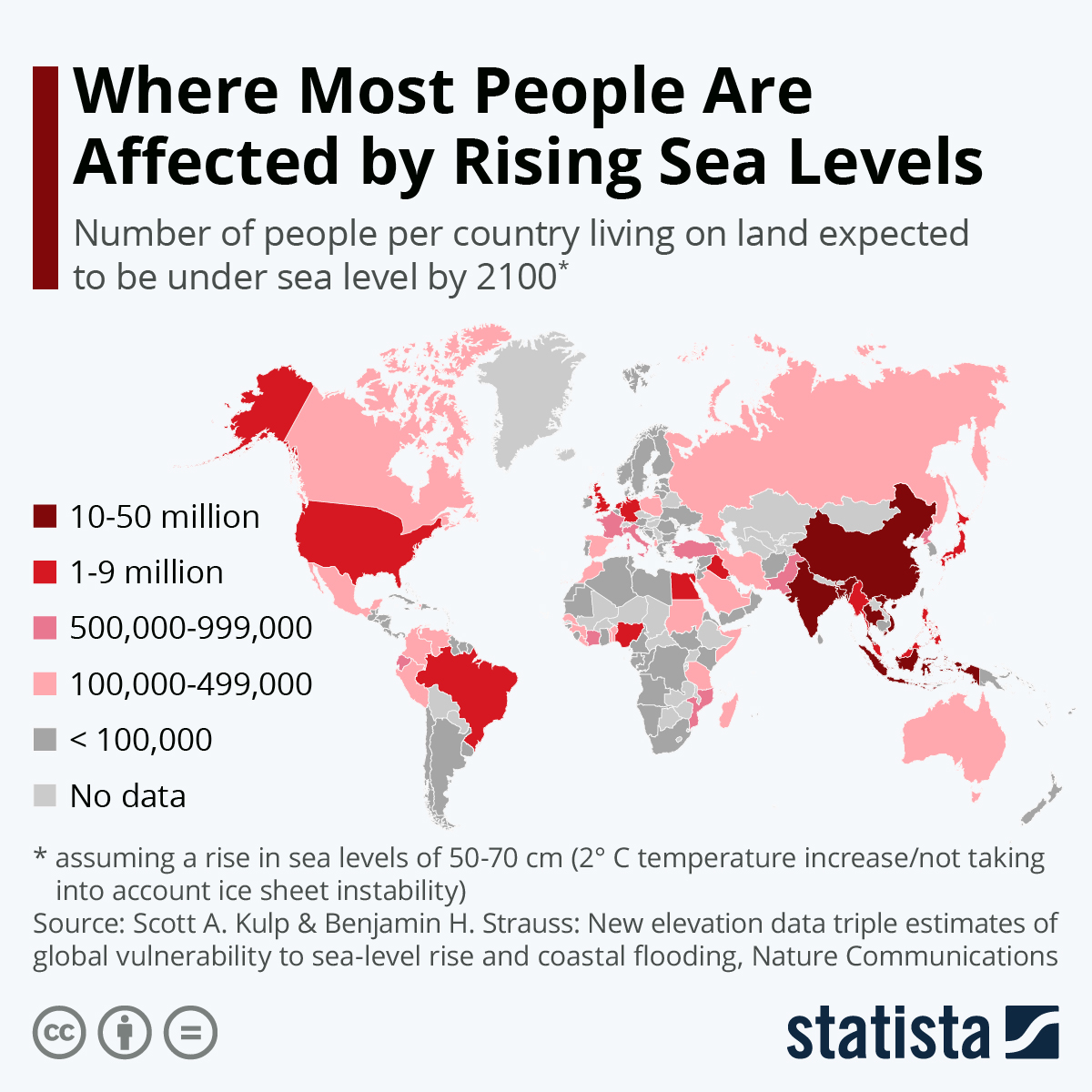Aditya Vaibhav | The TrickyScribe: Not less than 200 million people in the world will be doomed to be displaced by rising oceans by the end of this century. Flooding in low-lying coastal areas is already forcing populaces to migrate to higher grounds. The prospect of higher coastal water levels also threatens essential services including Internet access as much of the underlying communications infrastructure lies in the path of rising seas.
Of those 200 million, an estimated 70 percent will live in just eight Asian countries. Most people affected would live in China: 43 million or around 20 percent. At 32 million and 27 million affected people, Bangladesh and India would also be hit hard, as would be Vietnam, Indonesia, Thailand, the Philippines and Japan.
ALSO READ: CHANGING CLIMATE IN HINDU KUSH HIMALAYAS
An additional of 160 million will be affected by higher annual flooding due to rising ocean levels. The numbers are steeper than those published in earlier studies that used different coastal elevation models and assumed that only 250 million people in total would be affected by these adverse events. Interestingly, even this can be described as an underreported figure as the study assumed a global average temperature increase of 2° C and did not take into account the possibility of accelerated ice sheet melting.
You will find more infographics at Statista
Mass Displacement Could Risk Refugee Crisis
Most of the populations inhabiting low-lying coastal areas face the risk of becoming climate change refugees due to rising ocean levels. Those who once lived on coastlines will face displacement and resettlement bottlenecks as they seek habitable places inland.
In the Marshall Islands, where rising sea levels are forcing a choice between relocating or building up the land, residents will need help from other nations if they decide to undertake the expensive latter option. Communities vulnerable to rising seas can only go so far in holding back the tide.
Devastating Effects on Coastal Habitats
When sea levels rise as rapidly as they have been, even a small increase can have devastating effects on coastal habitats farther inland, it can cause destructive erosion, wetland flooding, aquifer and agricultural soil contamination with salt, and lost habitat for fish, birds, and plants.
ALSO READ: UNCURBED MINING, QUARRYING BEHIND KERALA FLOODS
Higher sea levels are coinciding with more dangerous hurricanes and typhoons that move more slowly and drop more rain, contributing to more powerful storm surges that can strip away everything in their path. One study found that between 1963 and 2012, almost half of all deaths from Atlantic hurricanes were caused by storm surges.
Accelerated Warming
Most predictions say the warming of the planet will continue and is likely to accelerate, causing the oceans to keep rising. This means hundreds of coastal cities face flooding. But forecasting how much and how soon seas will rise remains an area of ongoing research.
What If All The Ice Melts?
If all the ice that currently exists on Earth in glaciers and sheets melted it would raise sea level by 216 feet. That could cause entire states and even some countries to disappear under the waves, from Florida to Bangladesh. That’s not a scenario scientists think is likely, and it would probably take many centuries, but it could eventually happen if the world keeps burning fossil fuels indiscriminately.
The Way Ahead!
Many coastal cities across countries are already planning adaptation measures to cope with the long-term prospects of higher sea levels, often at considerable cost. Building seawalls, rethinking roads, and planting mangroves or other vegetation to absorb water are all being undertaken.
A $40 billion project in Jakarta aspires to protect the city with an 80-foot-high seawall. Rotterdam, the Dutch city has built barriers, drainage, and innovative architectural features such as a “water square” with temporary ponds, offers a model to other cities seeking to combat flooding and land loss.
